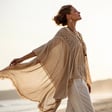The senior footwear market is experiencing a remarkable transformation as we move through 2025. Major brands are finally recognizing the untapped potential in this demographic.
Market Analysis of Shoes Companies Targeting Seniors
The footwear industry has awakened to a significant demographic shift. By 2025, adults over 65 will represent nearly 20% of the consumer base in developed markets, wielding substantial purchasing power. According to recent data from McKinsey's State of Consumer report, senior spending on specialized footwear has increased by 34% since 2023.
"We're seeing unprecedented growth in the senior segment," notes Emma Richardson, market analyst at Goldman Sachs. "Footwear brands that previously focused exclusively on younger demographics are now scrambling to develop senior-friendly product lines."
This shift isn't merely about capturing market share—it's responding to genuine need. The American Podiatric Medical Association reports that 87% of older adults experience foot problems, yet historically, only 30% found footwear that adequately addressed these issues.
Footwear Industry Competitive Analysis: Who's Leading the Way?
The competitive landscape in specialized senior footwear is heating up dramatically. Traditional orthopedic shoe manufacturers now face competition from mainstream athletic and casual brands entering this lucrative space.
New Balance has emerged as the frontrunner, capturing approximately 23% of the senior footwear market. Their strategy involves leveraging their existing reputation for comfort while developing specialized technologies specifically addressing age-related foot concerns.
Here's how the market currently breaks down:
| Brand | Market Share | Key Offering |
|---|---|---|
| New Balance | 23% | Stability technology |
| Hoka | 18% | Cushioning systems |
| Brooks | 15% | Motion control |
| Orthofeet | 12% | Medical-grade support |
| Clarks | 8% | Casual comfort designs |
Interestingly, Deckers Brands (parent company of Hoka) has made significant inroads. According to their careers page, they're actively recruiting footwear designers with expertise in geriatric foot health—a clear indication of their strategic direction.
Specialized Shoes for Older Adults: Innovation Trends
The most successful brands aren't simply making existing shoes wider or softer—they're fundamentally rethinking footwear design for aging feet. Deloitte's 2025 Manufacturing Industry Outlook highlights how footwear manufacturers are leveraging advanced materials science and digital manufacturing to create truly customized solutions.
Key innovations include:
- 3D-printed midsoles calibrated to individual pressure patterns
- Smart insoles that monitor gait and provide feedback through connected apps
- Temperature-regulating materials addressing circulation issues
- Ultra-lightweight constructions reducing fatigue
"The manufacturing approach has completely transformed," explains Dr. James Chen, podiatrist and consultant for several major footwear brands. "We're not just designing for the average senior foot—we're creating adaptive systems that respond to individual needs."
Best Stability Shoes for Seniors: What Makes Them Work?
When discussing stability shoes for seniors, it's crucial to understand the specific biomechanical challenges they address. Balance issues affect nearly 40% of adults over 65, according to the National Institute on Aging.
The best stability shoes for seniors incorporate several key features:
- Wider base of support
- Lower heel-to-toe drop (typically 4-8mm)
- Structured heel counters preventing excessive motion
- Strategic density variations in midsole materials
New Balance shoes for elderly consumers consistently rank highest in independent testing for stability metrics. Their Fresh Foam X 880v13 model, while not exclusively marketed to seniors, has become particularly popular among older adults seeking stability without the institutional look of traditional orthopedic options.
Orthopedic Shoes for Seniors: Beyond Medical Necessity
The term "orthopedic shoes" once conjured images of clunky, institutional footwear that prioritized function over style. In 2025, this category has undergone a remarkable transformation.
Brands like Orthofeet have successfully bridged the gap between medical necessity and fashion consciousness. Their latest collections feature sleek silhouettes, contemporary colorways, and subtle design elements that conceal therapeutic features.
This evolution reflects a deeper understanding of senior consumers—they want shoes that address their physical needs without broadcasting age-related challenges. The psychological component of footwear choice remains powerful at any age.
How Do Balance Shoes for Seniors Improve Safety?
Did you know falls are the leading cause of injury among older adults? The right footwear plays a crucial role in prevention.
Balance shoes for seniors incorporate specific design elements that meaningfully reduce fall risk:
- Textured outsoles increasing tactile feedback
- Strategic weight distribution promoting midfoot striking
- Heel stabilizers preventing lateral rolling
- Adjustable closure systems accommodating fluctuating foot volume
Safety footwear for seniors doesn't necessarily mean compromising on style or comfort. Brands like Kizik have introduced innovative hands-free entry systems that eliminate tripping hazards associated with bending to tie laces—a simple yet effective safety feature.
Balance and Strength: The Holistic Approach to Footwear
Leading brands are recognizing that footwear exists within a broader context of health and mobility. The most innovative companies are developing ecosystems of products and services around their shoes.
For example, Brooks now includes access to digital balance training programs with purchases from their senior-focused collection. These programs guide users through exercises specifically designed to strengthen the muscles that support stable walking.
"We're not just selling shoes anymore," explains Thomas Wright, product director at Brooks. "We're providing comprehensive mobility solutions that begin with proper footwear but extend to overall strength and balance improvement."
What Should I Look for in Comfy Women's Shoes for Aging Feet?
When searching for comfortable women's shoes as we age, several factors become increasingly important. Women's feet tend to experience more structural changes with age than men's, partly due to hormonal fluctuations affecting ligament laxity.
The best comfy women's shoes for aging feet should include:
- Accommodative toe boxes (wider and deeper)
- Cushioned but stable midsoles
- Adjustable upper materials that conform to bunions or hammertoes
- Moderate arch support that doesn't force the foot into unnatural positions
Brands like Clarks and Vionic have developed women-specific lasts (the foot models shoes are built around) based on 3D scanning data from thousands of older women's feet. This approach represents a significant advancement over the historical practice of simply scaling down men's designs.
New Balance Shoes for Elderly: Case Study in Market Leadership
New Balance deserves special attention for their strategic approach to the senior market. Rather than creating a segregated "elderly line," they've integrated senior-friendly features across their product range while highlighting specific models that best serve older adults.
Their 847v4 Walking Shoe exemplifies this approach—marketed as a performance walking shoe suitable for anyone, it incorporates features particularly beneficial to older users:
- ROLLBAR® stability technology preventing rearfoot movement
- ABZORB® cushioning reducing impact forces
- Synthetic upper with minimal seams reducing irritation points
- Available in multiple widths accommodating foot changes
This inclusive design philosophy has proven remarkably successful, with New Balance capturing the largest share of the senior footwear market without stigmatizing their older customers.
Financial Outlook: Investment Opportunities in Senior Footwear
From an investment perspective, the specialized senior footwear segment presents compelling opportunities. Goldman Sachs analysts project the global market for specialized senior footwear will reach $14.7 billion by 2027, representing a CAGR of 8.3%.
Public companies with significant exposure to this trend include:
- Deckers Outdoor Corporation (NYSE: DECK)
- Wolverine World Wide (NYSE: WWW)
- Caleres (NYSE: CAL)
- Steven Madden (NASDAQ: SHOO)
For investors seeking exposure to this demographic trend, these companies offer varying approaches to the senior market, from medical-grade orthopedic solutions to fashion-forward comfort designs.
Disclaimer: This content is for informational purposes only and not financial advice. Investment decisions should be made in consultation with a qualified financial advisor considering your specific situation and goals.
The footwear industry's approach to senior consumers has evolved dramatically. What was once an afterthought now represents one of the most dynamic and innovative segments in the market. As brands continue refining their understanding of older adults' needs and preferences, we can expect even more sophisticated solutions emerging in the coming years.
The most successful companies will be those that recognize seniors not as a monolithic group defined by limitations, but as diverse individuals seeking footwear that supports their continued active engagement with life.
Tags

About Evan L. Chamberlain the Author
Evan L. Chamberlain is a seasoned personal-finance strategist with over 15 years of experience in helping individuals maximize their savings and efficiently manage debt. His approachable insights on budgeting and investment have empowered thousands to take control of their financial futures.
Recommended Articles
7 Comic Books From the Past That Could Make You Rich
Discover 7 vintage comic books that could become valuable collectibles and potential investments. Learn what makes them sought after by collectors.
What Collectibles Are Actually Worth Investing In?
Discover the most valuable collectibles to invest in and learn how to navigate the collectible market effectively for long-term gains.
7 Rare Animals Unexpectedly Caught on Trail Cameras
Discover 7 rare animals revealed by trail cameras and learn about their importance in wildlife conservation efforts around the globe.
Master Money: The Amazon Picks for Finance Beginners
Kickstart your financial journey with Amazon's top picks for beginners. Discover essential books, master budgeting, simplify investing, and gain practical money management tips.
Amazon Top Picks: Boho Tops for Women. The Effortless Style Trend You’ll Love.
Discover boho tops for women, an effortless style trend for comfort and chic. Learn bohemian fashion features, styling tips, and where to find your perfect top.




